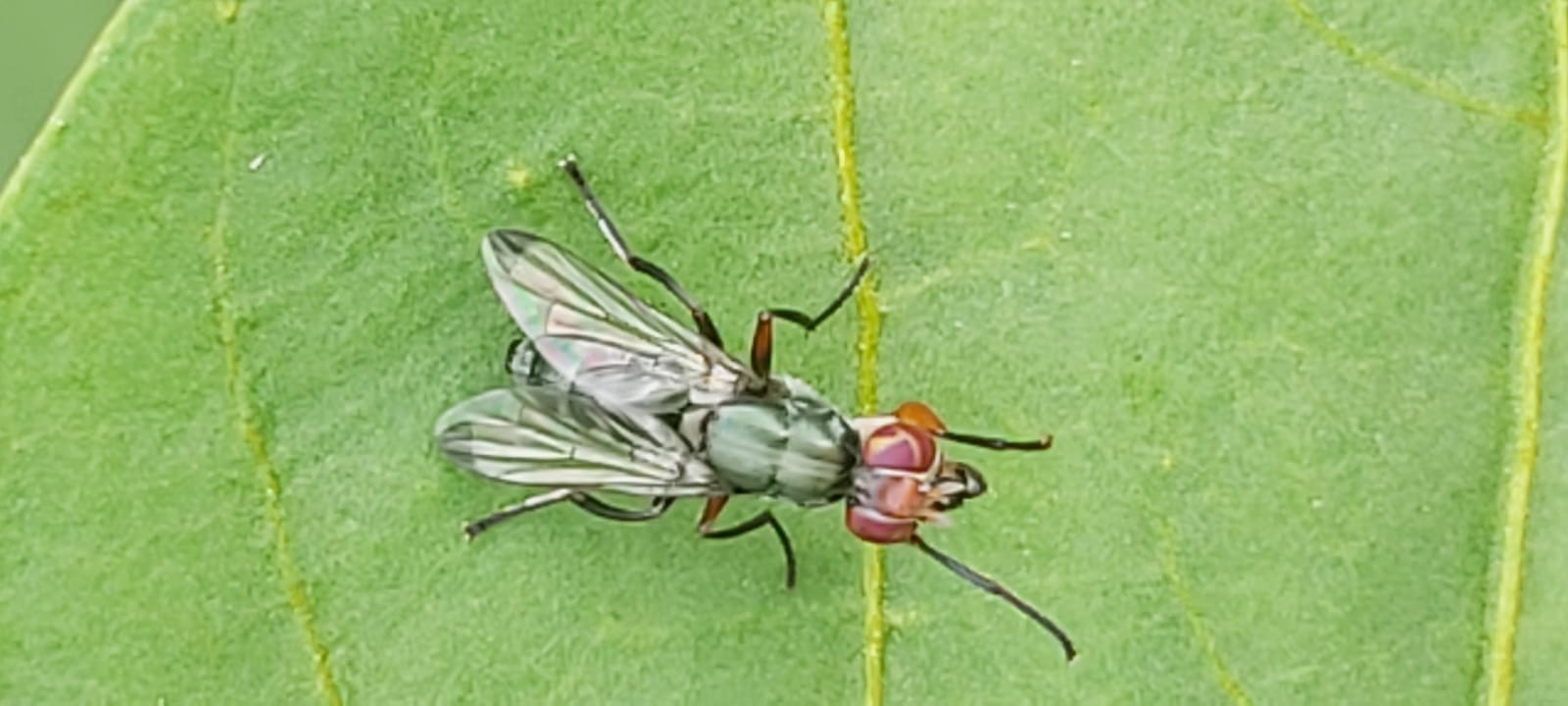Diptera.info :: Identification queries :: Diptera (adults)
|
Fly causing severe agricultural damage in Namibia (Africa)
|
|
| CarlosNA |
Posted on 18-05-2021 16:02
|
|
Member Location: Posts: 2 Joined: 17.05.21 |
Dear All, We are developing an agricultural Project in Southern Africa for asparagus (asparagus officinalis), and there is a type of fly that is causing a severe damage on the crop. The fly lays its eggs on the shoot of the plant, the larves follow the shoot and end up eating the crown (plant brain) and the "eyes", where the new asparagus shoot will come. Is there someone that could please help to identify this species? Also, if someone may indicate any type of control method (chemical or biological) on the larves and puppae that are in the soil, it would help a lot. It is first time that we see something like that... But well, new places, new enemies and adventures.... I attach hereby some pictures of the adult + larves + puppae. Let´s see if someone is able to identify it. I thank you very much for your invaluable help! CarlosNA attached the following image:  [98.91Kb] Edited by CarlosNA on 18-05-2021 16:21 |
|
|
|
| Tony Irwin |
Posted on 18-05-2021 16:50
|
|
Member Location: Norwich, England Posts: 7327 Joined: 19.11.04 |
Platystomatidae - Elassogaster species, I think. In Australia, E. linearis has been recorded in rotting asparagus crowns.
Tony ---------- Tony Irwin |
|
|
|
| CarlosNA |
Posted on 18-05-2021 18:13
|
|
Member Location: Posts: 2 Joined: 17.05.21 |
Thank you very much Tony, highly appreciated. I will do some research about E. linearis accordingly. If someone can help with current control methods for the adult/larva, IPM, whatever, I would be very thankful! Regards, Carlos |
|
|
|
| Andrew Whittington |
Posted on 14-06-2021 09:15
|
|
Member Location: Snowdonia Posts: 111 Joined: 30.01.07 |
Certainly Elassogaster probably E. vanderwulpi Hendel 1914. There is so little known of the biology for Afrotropical Platystomatidae, that control and IPM is going to be a learning curve and may have to start with first principles and whatever words for associated taxa (Tephritidae) for example. The link with asparagus in the Afrotropical context is new and I was unaware of the E. linearis association - Tony, do you have a reference for that please? Regards, Andrew -----o0o----- Andrew E. Whittington https://flyevidence.co.uk/ |
|
|
|
| Tony Irwin |
Posted on 14-06-2021 10:39
|
|
Member Location: Norwich, England Posts: 7327 Joined: 19.11.04 |
https://media.aus...mplete.pdf McAlpine, D.K. (2001) Review of the Australasian Genera of Signal Flies (Diptera: Platystomatidae). Records of the Australian Museum Vol. 53: 113–199 - (See page 153, bottom of left column) Tony ---------- Tony Irwin |
|
|
|
| Nosferatumyia |
Posted on 14-06-2021 12:53
|
|
Member Location: Posts: 3545 Joined: 28.12.07 |
There are many other pests of Asparagus, and platystomatids are predominanly secondary inviders, infesting plants mainly damaged by caterpillars or weevil grubs, eating mostly rotting tissues of the plants. So, it has not been proven if really this fly caused damage to asparagus, which can be eaten by a moth caterpillar or fruit fly maggots. Val |
|
|
|
| Andrew Whittington |
Posted on 15-06-2021 12:57
|
|
Member Location: Snowdonia Posts: 111 Joined: 30.01.07 |
Thank you Tony! Yes, Val, I totally agree. Most Platystomatidae are saprophagous (even Rivellia feeding on root nodules may be attacking diseased tissue). -----o0o----- Andrew E. Whittington https://flyevidence.co.uk/ |
|
|
|
| Jump to Forum: |












